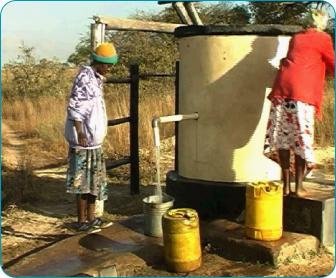
by Fern Shaw | Apr 8, 2013 | Charity, Water Coolers
The Elephant Pump – how does it work?
What is it?
The Elephant Pump is a manual activated water pump based on a 2000 year-old Chinese design that the CEO of The Africa Trust, Ian Thorpe, adapted, to make it stronger and more durable.
This award winning Pump brings a cost effective, reliable and sustainable solution to one of Africa’s biggest problems.
What does it do?
It is made and maintained using materials that are locally available in remote rural sub-Saharan African communities, which means that once the Pump has been built, local resources can be drawn upon for repairs and replacement parts.
It draws water up from a well at a high volume – approximately 1 litre per second. That means 60 litres per minute.
How does it work?
As the handle is turned, water is drawn up from a well of up to 30 meters in depth via a central pipe by washers attached to a rope. As the pump mechanism is fully enclosed to exclude sources of contamination, it yields a quality and quantity of water which exceeds WHO guidelines. The surplus water is used for livestock and irrigation of crops.
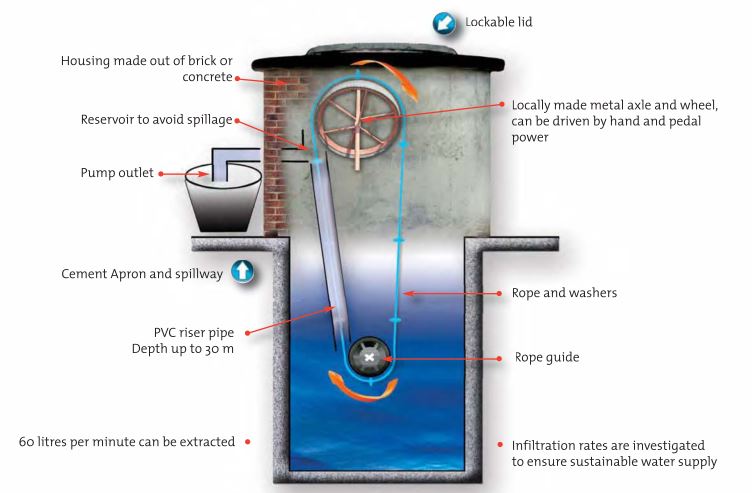
What are the benefits of the Pump?
The Elephant Pump has already contributed to bringing over 2 million people in rural Africa, a safe water source, at a price significantly less in comparison to comparable hand pumps.
- The ancient methods of constructing the Pump ensure the materials can be locally sourced and built, further promoting employment within the local community.
- Reliability – At any one time around 95% of existing Elephant Pumps are in operation which is 40% above the average for Africa.
- Ease of Use – The Elephant Pump is safe and suitable for operation by children and the elderly.
- High Volume – The Pump can provide 500 people with 20 litres per person, per day for domestic use.
- The money saved from installing an Elephant Pump provides enough money to build an additional pump providing a further 500 people with water.
Where does AquAid fit in?
At AquAid, we continually strive to supply water coolers that are best suited to our customers’ requirements thereby ensuring that our customers keep hydrated. At the same time, our water coolers also help provide safe drinking water to thousands of people every year by donating to sustainable charities; the Elephant Pumps in particular, being built as a direct result of monies donated to The Africa Trust.
How do you fit in?
For each purchase of an AquAid water cooler, a portion of that revenue is donated to Christian Aid and The Africa Trust.
We also have on-going paperless campaigns where selected customers are offered the opportunity to have an Elephant Pump with their name on it, built in a rural community, thereby ensuring a safe water supply to others less fortunate.
So when you use our services you are also benefiting many others in the developing world and helping to save lives.

by Fern Shaw | Mar 26, 2013 | Charity, Health and Hydration
There are seven billion people on this planet and only one has run 521 miles on a treadmill in a week!
AITC’s Dan Lawson broke Sharon Gayter’s incredible record in the early hours of this morning, surrounded by well-wishers and supporters including Albion in the Community’s Dick Knight, Alan Sanders and Michael Edwards, plus Albion’s chief executive Paul Barber, who ran for an hour with Dan earlier in the evening alongside club chairman Tony Bloom.
In an electric atmosphere, Dan’s seven-day mission came to a climatic end amid raucous cheers, and quite a few tears, at 12.20am. Running over three marathons a day, the 40-year-old from Hove tested his mental and physical strength to the absolute limit battling through severe stomach pain, sleep deprivation, and creaking joints to break a world record that may never be eclipsed.
Buoyed throughout the final day by his favourite music from the early 1990s and unstinting support from his colleague Stuart Christie, friends Charlotte Jalley and Lewis Pilgrim, and his two daughters Lilly and Ruby, Dan also managed to conduct three TV interviews – two live – and four on the radio!
Dan’s stunning achievement was to raise funds and awareness for AITC’s children’s activity projects, designed to keep their youngsters healthy and active.
Sponsor Dan: here.
All of us here at AquAid and specifically those at AquAid West Sussex, who sponsored Dan’s Water Coolers and drinking water, would like to say congratulations to Dan on an absolutely phenomenal achievement!
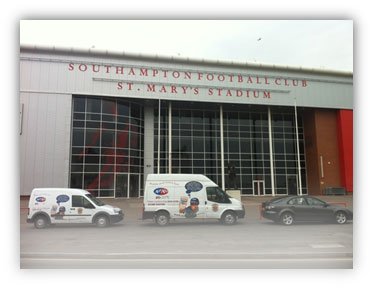
by Fern Shaw | Mar 26, 2013 | Water Coolers
No stranger to hard work that brings results, AquAid South Coast have a substantial customer base that they have been servicing since 2000.
This is achieved, in part, by being staffed by a great team, headed up by Mike O’ Dononghue, photographed below assisting with a delivery to one of AquAid South Coast’s most recent and rather prestigious customers, St. Mary’s Stadium, home to Southampton F.C
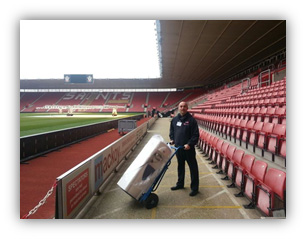
St Mary’s Stadium is a UEFA 4-star rated stadium and with a capacity of 32 689, is the largest football stadium in the south of England, outside of London. Apart from hosting countless football matches since being opened in 2001, the stadium has also hosted other notable events such as film premieres for movies such as Casino Royale, as well as music concerts by Elton John in 2005 and Bon Jovi in 2006.
There was a tribute to Elvis Presley in August 2007 and Southampton fan Craig David played at St Mary’s on 25 October 2007.
In the Northam Stand, the Saints Study Support Centre – a club run initiative to help school children outside of class – can be found, along with the offices of Southampton City Training, a quasi-council run organisation which helps young people get vocational training.
So, a very busy stadium, choc-a-block with very busy people means a lot of thirst and a definite need to keep all hydrated during their working days.
To this end, AquAid have installed 26 mains fed water coolers at St Mary’s Stadium, thereby ensuring that not only will all the busy people at St Mary’s keep hydrated and productive but, that by their purchase, they will be contributing towards children in Third World countries being able to have access to clean, fresh drinking water through contributions to Christian Aid and The Africa Trust.
A win-win situation!
by Fern Shaw | Feb 27, 2013 | Water Coolers
As you may well know, an integral part of AquAid’s professional ethos has always been to work smart; be kind to our environment (from whence we draw our sustenance in so many ways) and be charitable with a knock-on effect by involving ourselves in sustainable projects globally, choosing projects that allow people to empower and help themselves long after water pumps have been installed and wells built.
Purchases of AquAid’s range of water coolers, water boilers, in cup drinks and water fountains has generated donations for January 2013 as follows:
£6,735 to Christian Aid
and
£50,492 to The Africa Trust
In 2012, a total of £88,600 was donated to Christian Aid and £688,000 to The Africa Trust.
The Africa Trust works to bring sustainable solutions to poverty in Africa. This includes establishing sustainable supplies of clean productive water and decent sanitation. Income generating projects are used to pay school fees, improve clinics and generate the funds needed to run orphanages.
Wealth creation is an important objective, with business skills training helping school leavers and villagers to start or expand profitable businesses. One of the innovative new projects is growing bananas to pay for school fees. The banana plantation can only be established once an Elephant Pump or piped water plus a fenced area, have been installed at the school.
More information about the banana growing and other sustainable projects can be found here, paying for school fees with bananas!
We are looking forward to a wonderfully successful 2013 and of course, our previous, current and future successes with our charitable contributions are all because of the relationship we have with you, our valued client.

by Fern Shaw | Feb 22, 2013 | Charity, Water Coolers
As was mentioned in our previous blog, we at AquAid Birmingham maintain great staff retention partly due to our work ethic and partly due to our organisation being staffed by a team of professionals who also care about those other than themselves.
This attitude is spearheaded by Scott Barnbrook, who is the Regional Manager here at AquAid Birmingham.
 Scott has just competed in the www.toughguy.co.uk competition and in doing so, raised in excess of £500 for Birmingham Dog’s Home www.birminghamdogshome.org.uk , further illustrating that it’s not just about a fellow man, but man’s best friend too.
Scott has just competed in the www.toughguy.co.uk competition and in doing so, raised in excess of £500 for Birmingham Dog’s Home www.birminghamdogshome.org.uk , further illustrating that it’s not just about a fellow man, but man’s best friend too.
 AquAid Birmingham believes strongly in optimum service, by ensuring that we effect prompt deliveries. This allows us to maintain multiple key accounts, a few examples being large contracts with many large building sites where they are on lengthy projects building new hospitals and large Tesco’s stores.
AquAid Birmingham believes strongly in optimum service, by ensuring that we effect prompt deliveries. This allows us to maintain multiple key accounts, a few examples being large contracts with many large building sites where they are on lengthy projects building new hospitals and large Tesco’s stores.
AquAid Birmingham’s efficient and knowledgeable account managers and sales team are available for anyone requiring water cooler; water boiler or drinks solutions for their school, organisation or company.
Please feel free to fill out the form below to have one of the team contact you. We’ll be delighted to assist you


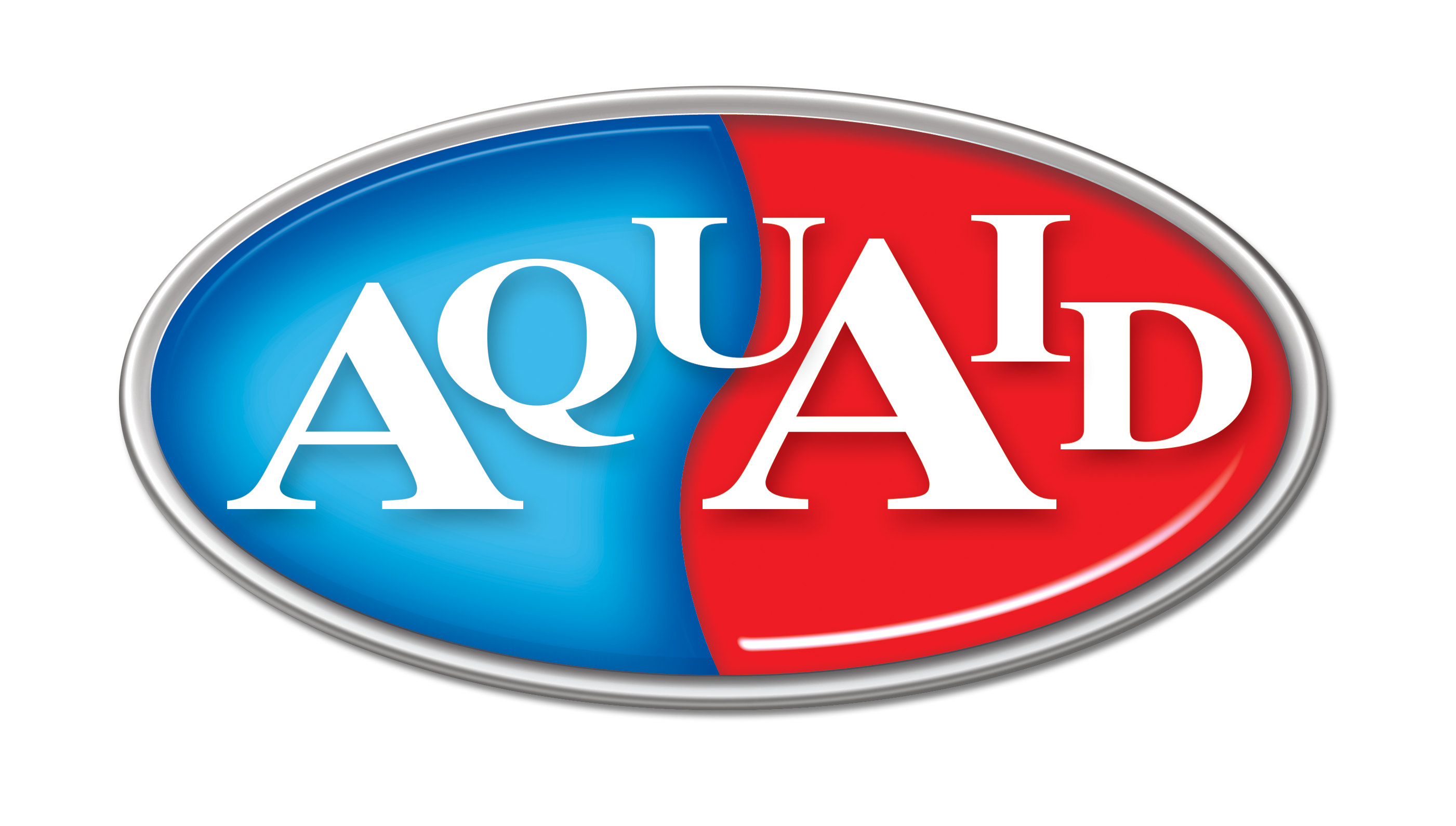




 Scott has just competed in the
Scott has just competed in the  AquAid Birmingham
AquAid Birmingham